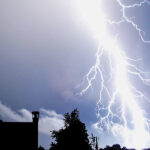ANSI E1.2-2012
As a reference, we are going to use ANSI E1.2-2012 Entertainment Technology — Design, Manufacture and Use of Aluminum Trusses and Towers, as it is the only existing relevant standard for the U.S. There are requirements in this document for the types of inspections that must be conducted for truss as well as their frequency.
Here is a list of the items in the standard that must be inspected:
The following items shall be inspected as described:
Geometry of Trusses and Towers for:
- Twisting of the Truss or Tower
- Racking of the Truss or Tower
- Bending of the Truss or Tower
Chords for:
- Dents
- Bends
- Abrasion
Diagonals for:
- Dents
- Bends
- Abrasion
- Being Missing
Connecting Plates (if used) for:
- Flatness
- Deformation or Excessive Wear of Holes
Pinned Connector Forks (if used) for:
- Deformation
Fasteners for:
- Proper Grade – Must Be Matched
- Deformation
- Excessive Wear
Welds for:
- Breaks, Cracks, or Deformation by Visual Inspection
Checking Geometry
Starting at the top of the list, there are few different methods to check the geometry of the truss. Your first clue that a section of truss might have a geometry problem would be if it doesn’t sit flat on a flat floor. To check further, one test is to place at least two (three is better) straight flat bars on the top the truss section. These flat bars should rest across the top of the chords, perpendicular to the truss section, and extend at least 12 inches beyond the width of the truss on both sides. Then, simply line up all of the bars visually. The bars should all line up. If they don’t, you will be able to identify if the truss has geometric issues. For example, if the center bar dips lower on the right, it is likely that the truss has been racked in the center. If there is a successive dip from bar to bar, then the truss is showing signs of a twist. Any time that these three alignment bars don’t align, you have cause for concern.
Another test for geometry, albeit not necessarily visual, would be to measure the truss diagonally in all faces. The check here is that the measurement from the upper left corner to lower right corner matches the measurement from the upper right corner to the lower left corner. A good tolerance range on this diagonal measurement would be 1/16 inch. Anything more than that, you should contact the manufacturer.
Inspecting Truss Members
Next, we get into the inspection of the individual members. (If you are unfamiliar with truss nomenclature, see Fig. 1 for a visual assist).
It is important to check the condition of the chords when evaluating the truss members/components. Chords effectively transfer the load down the length of the truss section. Furthermore, since there are so many other members welded to them, they are not reasonable to repair or replace. Therefore, any damage to the chords is of high concern. All of the truss members have a function and are important, otherwise they wouldn’t be there, but the chords are critical for the reasons listed.
When inspecting any of the truss members, there are some consistent things in the list for which the guidelines for inspection remain the same. Dents, bends and abrasions can happen to any of the members, usually due to poor handling, but can also be the result of using the wrong type of clamps, or chain rubbing the truss, or any variety of occurrences. A good rule of thumb to determine if this type of damage is excessive is the 25 percent rule. If any abrasion, bend or dent is deeper than 25 percent of the wall thickness of the material, then the truss needs to be removed from service.
Keep in mind that most members in typical bolted truss are only 1/8 inch thick. So dents, bends and abrasions that are only 1/32 inch deep would fall into this category. You might think that this is overly conservative, but the reality is that the truss is purpose designed and built. When the engineers analyze it, they are considering that the entire shape of material is available for the truss to perform its function. A 25 percent reduction from that is HUGE!
Checking Welds
Before we get into connections, let’s talk about welds and the areas around welds. There are a couple of types of weld cracks that you might find when inspecting truss. The first is what you could call a hairline crack. Found in the final tie-in of the weld, these are typically surface cracks and usually run perpendicular to the weld bead around the member. While these are cracks that you should watch to make sure they don’t propagate, they aren’t typically of structural consequence. However, with all cracks, make sure you consult the manufacturer for advice.
The second type of weld crack would be a stress crack. Typically, proper welds won’t show cracks. However, there are situations in certain welded components where this is not true, and the weld can break before the adjacent material. A stress crack typically runs parallel to the weld bead. These are of great concern since this would be an indication of excessive stress on the truss, or at least on that member. As mentioned before, consult with the manufacturer when you discover ANY type of crack.
Another thing to note about welds and weld areas relates to the heat affected zone, or HAZ. Since aluminum truss is fabricated using tempered material, adding excessive heat to it, like welding, changes the material properties. This creates a heat affected zone around the weld. It is in this area that you would be more likely to see a sign of failure, as it is much weaker than raw un-welded material. In fact, in certain types of destructive truss testing, the mode of failure can be predicted to the HAZ with greater than 90 percent accuracy.
Checking Connections
Lastly are the connections. Whether you are using bolted, spigoted or some other type of connection, proper function of the connection is critical to making sure a completed truss span performs properly.
Many people forget to inspect the hardware when inspecting truss, but the pins and bolts are just as relevant as anything else. When inspecting the hardware itself, you first want to make sure graded hardware matches. If you are using Grade 8 bolts, you need to have Grade 8 nuts. Next, make sure that there isn’t excessive wear on the fasteners.
The last item is deformation, and this applies to both the hardware and the connection device itself. Deformation in the hardware is pretty straightforward. You want threads on bolts to be clean, and the pins in spigoted or other pinned truss need to be straight and the proper diameter. A bent or bowed pin is a sure sign of overstress. Deformation in bolted truss plates can take two forms, and you need to inspect for both. First would be the holes themselves. They need to be the appropriate round shape. If it is an oval, there is a problem. Second would be the flatness of the plates. When bolted truss is overstressed, the plates can potentially bow or stretch outward. Once this happens, they will not return to their original shape, and the truss is unsafe.
Spigoted truss is a little different, but you are looking for similar evidence. First, the holes need to be the proper shape. Once again, they need to be their original shape. If you are using spigot or fork connections, make sure that the blades are straight. With spigot-type connections, you also have to look at how the connection is installed in the truss. If they are welded, you should have already inspected them, but again review for cracks. If they are mechanically fastened with roll pins, you need to check to see if the connection is loose. Also, inspect the rollpins themselves. They should be flush to both sides of the tubes, and the holes they are in should be tight all the way around. If you see a gap between the back of the roll pin and the material it is mounted into, this is a sign that the truss has seen excessive loads and needs to be removed from service. Once again, if any questions arise during the inspection process, consult with your manufacturer.
“Frequent” vs. “Periodic”
As noted in the ANSI standard, there are two types of inspections, which are identified, as “frequent” and “periodic.” Frequent inspections are to be conducted every time a truss is used. Before you start rolling your eyes, first consider that you are hanging stuff overhead, but second, consider how long it really takes to do a visual inspection of the truss. This can be done with the truss coming off the truck during load-in. Specifically, the standard calls for the person doing the inspection to be a “Competent” person, who is, and I am paraphrasing, someone who is capable of identifying hazards and authorized to take action. So, presumably, someone who is responsible for hanging equipment over head would also be someone that is competent to conduct these visual truss inspections.
The second type of inspection is a periodic inspection. This inspection is one that requires records to be kept. You should start keeping records of each section of truss when it is first acquired, and then every year thereafter. The records should indicate the date of inspection, and who performed the inspection. As opposed to the competent person for frequent inspection, the periodic inspection requires a “Qualified” person. This is defined as someone that has either through a degree, certificate or extensive experience, demonstrated the ability to solve problems related to truss.
It is further important to note that in addition to being vigilant and responsible regarding safe equipment prior to its use, the record-keeping aspect of truss inspection is vital to protecting yourself in the event of an incident. You can be assured that when an investigation begins, a request for inspection records will be one of the first things to come up. Don’t take this lightly, as a response that is inadequate is essentially an admission of irresponsibility.
A last word of caution. Truss has long been considered an afterthought, or less important, than the lights or audio or whatever else. But considering that it is a key element to holding all of that equipment in the air, it definitely needs the appropriate attention and respect to ensure safety for the performers, technicians and audience. Be safe out there.
Keith Bohn, custom projects director with Tomcat, has more than 25 years of industry experience. He has served on ESTA/PLASA’s Working Rigging Group and chairs its task group for ANSI E1.21, outdoor structures for entertainment.
Note: This online posting expands on the text published in PLSN’s “Safety Factor” feature, July 2013, page 32, which needed to be edited due to space constraints.

